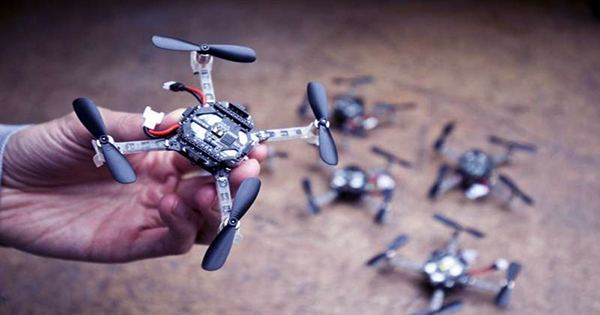The ability to detect certain odors can literally be the difference between life and death in some situations, such as trying to stimulate the respiratory tract of a person trapped in the rubble or detecting unexploded ordnance. Unfortunately, the human nose is a bit frustrating in this section, but the moth’s antenna detects subtle melodic odors. Combine with an autonomous drone that can avoid obstacles and what do you get? Meet the smelter.
Autonomous drones were created to use live antennas from an insect to detect odors in places that are difficult Smellicopter were developed as part of a study published in the Journal of IOP Bioinspiration & Biomimetics. Autonomous drones were created to use live antennas from an insect to detect odors in places that are difficult for humans to access due to logistical or security reasons., Led by a team from the University of Washington.
There are many applications of the ability to dry chemicals in the air, but when man-made or man-made materials failed to provide the necessary sensitivity to this type of technology, the team turned to nature for an alternative. Moth antennas can sense the transient plumes of chemicals as they orbit the environment.
They are highly sensitive, amplifying the chemical signals they detect, which triggers the moth’s cellular responses. To make the most of these natural odor detectors, the researchers put the live Manduca sexta hawkmoth samples in a fridge because it works as cold as anthrax. They then remove the moth’s antenna and attach it to the smelter using small cables that can translate the odor signal energy picked up by the antennae. These antennas were biologically and chemically active for four hours after removal, and remain active even longer when stored in a refrigerator.
Drones needed to be able to overcome obstacles in their path, so they developed a “cast and sard” protocol that was inspired by the way insects search for fragrance, next. The drone goes to the left and starts scanning an area, but if it does not receive any chemically significant signal, it travels the same distance to the right. When it detects an odor, its flight path will move toward the chemical queue with infrared sensors to pick up physical obstructions. When the drone encounters such an obstacle within 20 centimeters (8 inches), it returns to the path of its left-to-right casting flight to get closer.
Melanie Anderson, lead author of UW Doctoral Studies in Mechanical Engineering, said in a statement, “So if Smellicopter was casting on the left and now there is an obstacle on the left, it will switch to the right-wing.”
“Nature really takes our human-smelling sensors out of the water. Using a real moth antenna with Smellicopter we were able to achieve the best of both worlds: the sensitivity of biological organisms to a robotic platform where we could control its motion.”















